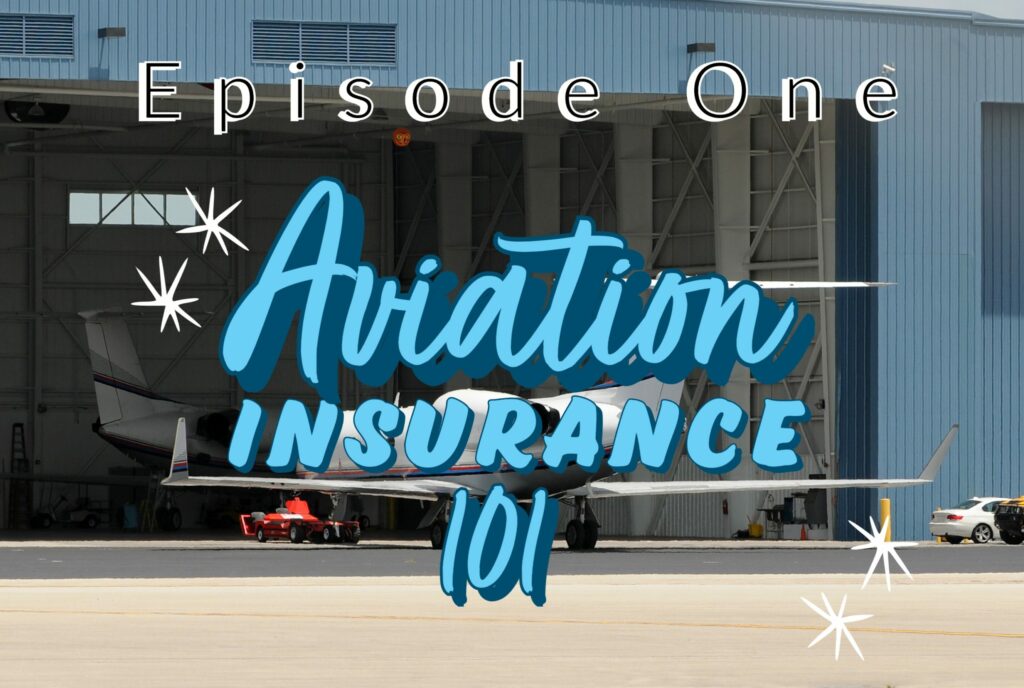Welcome to the Aviation Insurance Blog! We’re excited that you are interested in learning more about the aviation insurance industry. These articles follow the topics of our Aviation Insurance Podcast episodes, which you can listen to here.
Welcome to the very first Aviation Insurance Blog post! We’re so glad that you’re joining us as we begin to explore this unique industry. What we hope to do through these posts is to share with you, the aircraft owner or aviation business owner/operator, the basics of aircraft and aviation insurance. We’re going to start at a very foundational level, talking about some of the essential components of aviation insurance, and we will go more in-depth on complex topics down the road. We will also do our best to keep you up to date with market events and trends in the industry.
A lot of the information in these first several posts will be complemented by my book, Aircraft Insurance Fundamentals, which can be found on Amazon (this isn’t intended to be a money grab, but the book would undoubtedly be a good reference for the first few posts/podcasts and a great tool to follow along with).
Let’s start by looking at some of the things that make aircraft insurance so unique. Many of us are used to buying insurance for our cars or houses, and the business owners out there may even be familiar with different insurance policies for their companies. So what makes aircraft insurance so different?
To illustrate a few of the key differences, let’s make a comparison to buying car insurance. Imagine that you just got a brand-new car, and you want insurance to protect it from future damage. If you get in a fender bender or big crash, you’ll likely want the damage repaired or the car replaced if it’s totaled. For most car policies, you’re insured for pretty much any place that you can drive the vehicle and you can let your friends or family members drive it with minimal additional risk.
Aircraft are obviously a bit different than this, considering they are powered by vastly different propulsion methods with varying horsepower. There are also different numbers of seats and handling characteristics. Because of all these additional factors that contribute to the vehicle’s safe handling, greater expertise is necessary to determine who should be piloting the aircraft. Aircraft insurance requires underwriters and insurance companies to have a broad understanding of this specialized field, making them more equipped to determine who has the necessary capabilities to operate an aircraft safely.
The second key thing that differentiates aircraft insurance is the substantially higher values of the insured vehicles. When you look at aircraft that cost north of $70 million with liability limits near $500 million, a lot more care and diligence are required. It is sometimes even necessary to spread the risk out over multiple insurance companies. These companies need to have confidence in the individuals operating the vehicle if they are going to take on the risk to insure it.
These increased stakes that require greater care and attention are some of the most apparent reasons why aviation insurance is considerably different than the rest of the insurance marketplace. In later posts as we explore more specific topics, we will get further into what this specialized industry really entails. Aircraft insurance, unfortunately, can’t be as simple as calling the number on the sign labeled “insurance” on the side of the road; however, this introductory information has hopefully helped clarify why a specialty market for aviation insurance exists.
If you found this interesting or helpful, see more posts like this from our website and be sure to subscribe to the Aviation Insurance Podcast on iTunes, Spotify, Apple Podcasts, or your podcast player of choice.


